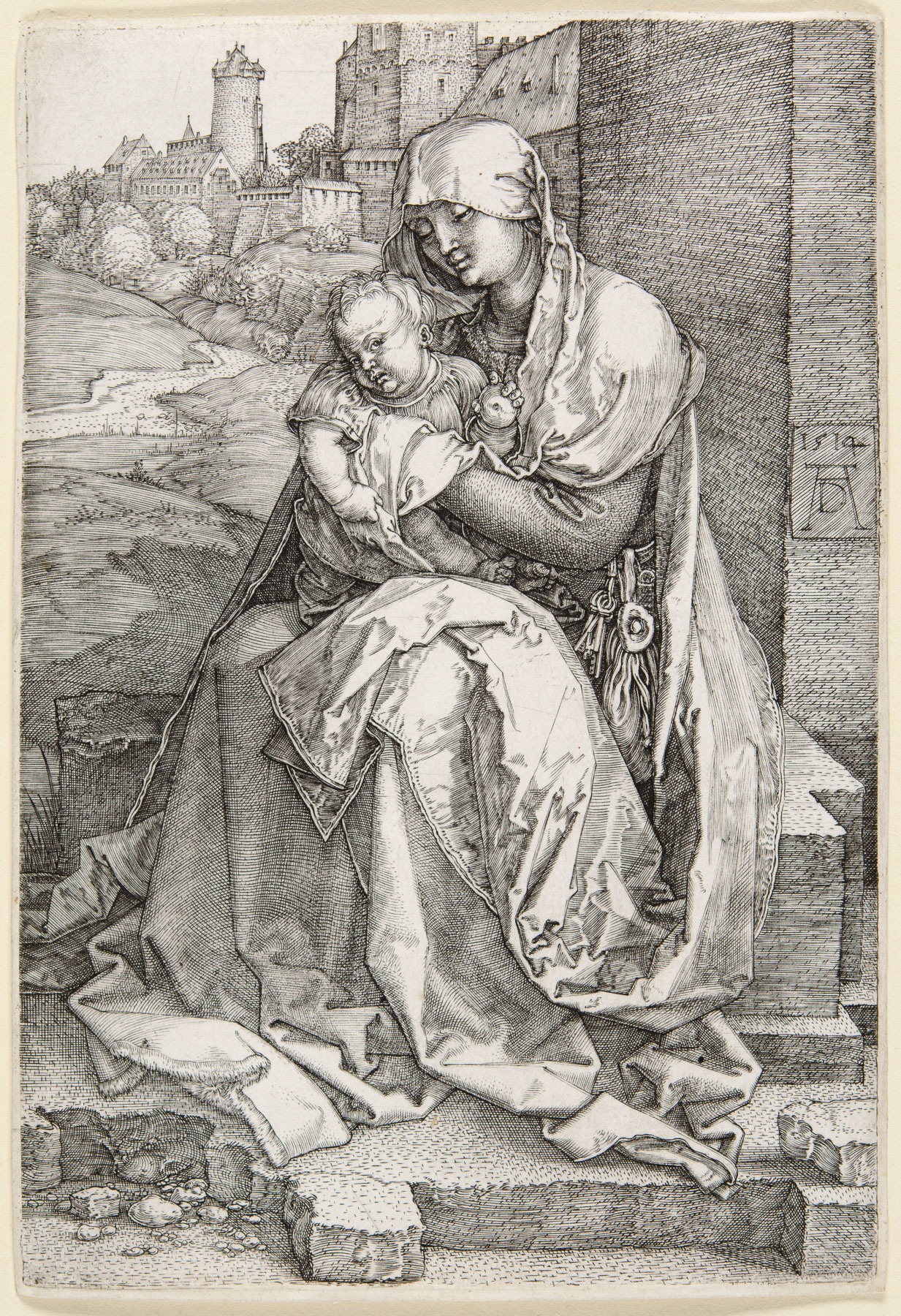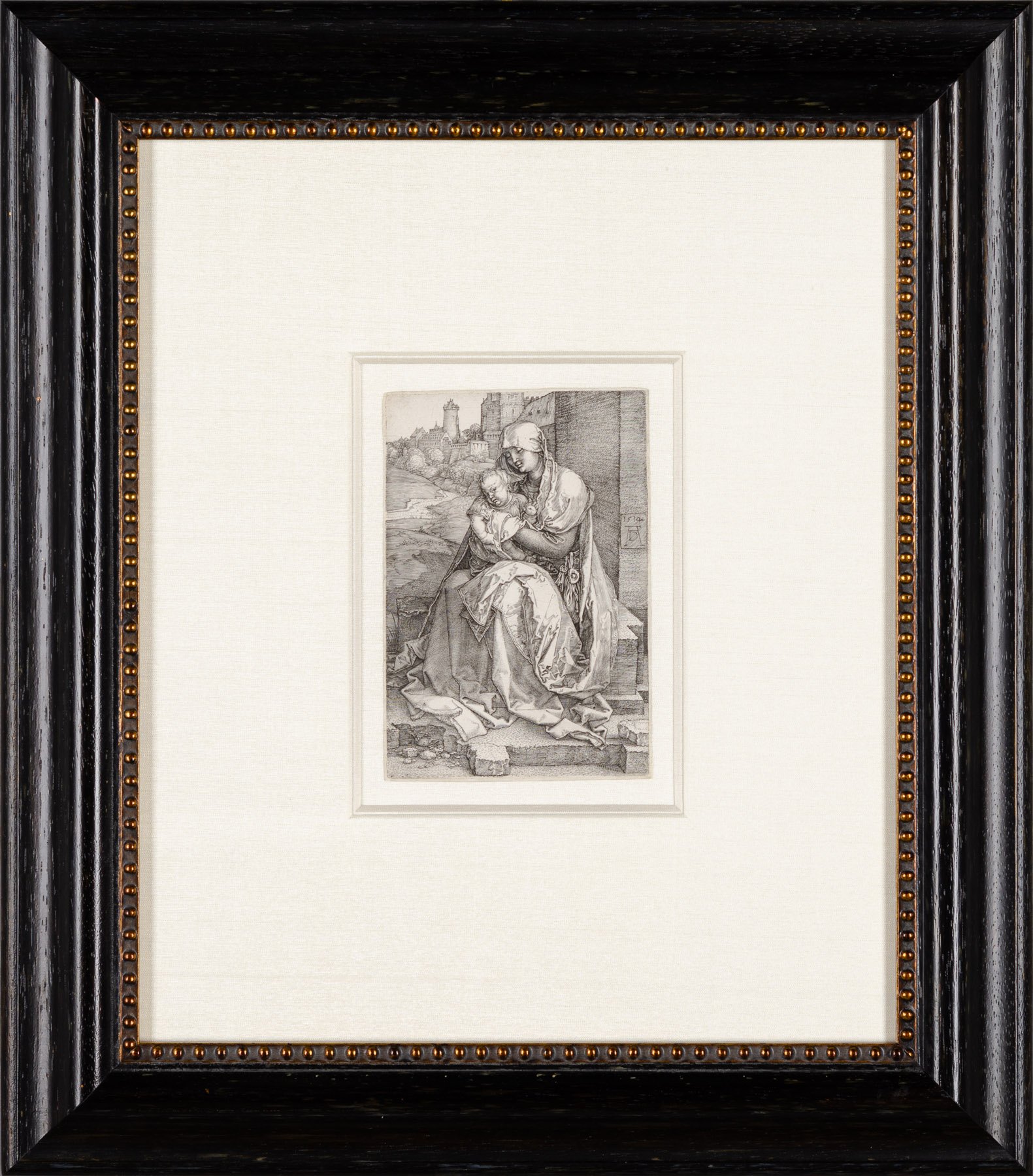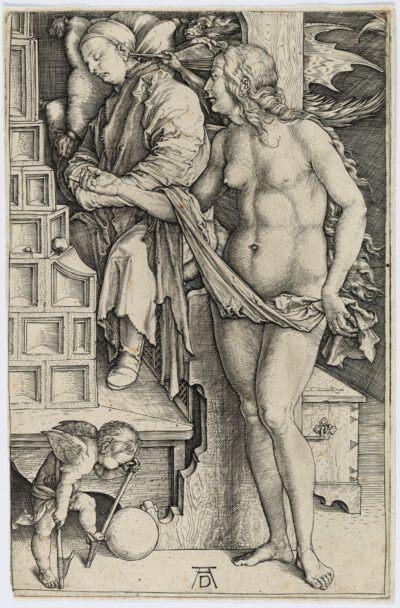Madonna by the Wall
Albrecht Dürer
Madonna by the Wall
engraving
1514
An original Albrecht Dürer engraving.
1514
Original engraving printed in black ink on laid paper with no watermark (typical of early impressions of this engraving).
Dated and signed in the plate with the artist’s monogram on a tablet at the center of the right edge.
A superb and richly printed 16th century/lifetime Meder “b” (of c) impression of the first state of two, printed after the appearance of the horizontal line from the tower to the buildings and the scratch in the drapery of the knee, showing rich contrasts throughout.
Catalog: Bartsch 40; Dodgson 72; Panofsky 147; Meder 36.I.b; Strauss 78; Schoch/Mende/Scherbaum 73
In 1827 the scholar Joseph Heller called this “the most perfect and rare of all Dürer’s engravings.” In 1888 S.R. Koehler assigned to it “a special place among all of Dürer’s plates.” It is transitional from the technique of deep black lines to a more even-tempered, silvery mat texture. Its mood is almost tragic, akin to that of “Melachholia I,” perhaps because of the death of Dürer’s mother, which occurred on May 14, 1514. In 1905 Heinrich Wöllfin considered the “Madonna by the Wall” the ultimate of Dürer’s Madonnas: “It need not be analyzed. The composition is so natural that everything falls into place. Nowhere is there a rupture of contours. The expression is achieved by forms within the silhouette. The harmony of tone is incomparable.” “The Madonna by the Wall” represents a perfect coincidence of apparent opposites. Regal, virginal, yet humble and motherly. Its utmost precision of design is combined in incomparable softness of texture. In the background appears the castle of Nuremberg, which Dürer could see from the windows of his house.





